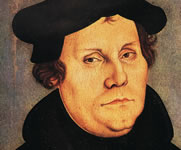Different Styles & Periods
- In the beginning was the castle
- A declaration of love to antiquity
- From Renaissance to Romanticism
- Baroque centre of culture and enlightenment
- Baroque magnificence
- Baroque gardens in the north
- Palatine baroque and Francophile elegance
- Late-baroque treasure troves
- Baroque to Biedermeier in Berlin and Brandenburg
- The Golden Age of Classicism
- Jewels of historicism
- Neo-Gothic romanticism
Neo-Gothic romanticism
Neo-Gothic was the earliest, most important historicist style (particularly in the United Kingdom). At the heart of its development was a comprehensive approach to architecture and design which was also reflected in literature and lifestyle. Neo-Gothic formal language was based around an idealised view of the Middle Ages. Its heyday was between 1830 and 1900. At the start of the 19th century, romanticism in Germany led to an enthusiasm for medieval architecture, especially for castles and the great Gothic cathedrals. The passion for rebuilding existing castle ruins in the English fashion led to the preservation of the many fairytale, historically symbolic castles which are popular tourist attractions today.
Hohenzollern Castle, Zimmern
Show on map »
Moyland Castle Museum,Bedburg-Hau
The Dutch word that was the basis for the name of this medieval moated castle means "Beautiful Land". Occasionally serving as a summer residence and love nest, Voltaire and Frederick the Great met here in 1740 and were planning to establish an academy of philosophy called the "factory of truth".
Between 1854 and 1862, the exterior was converted to the neo-Gothic style by the acclaimed cathedral architect Ernst Friedrich Zwirner. In 2006, its splendid grounds were voted the prettiest parklands in North Rhine-Westphalia thanks to their harmonious blend of architecture, landscaped gardens and modern culture.
Show on map »
Show on map »
Stolzenfels Castle
Show on map »
Travel Planner
Select an option...
Location
- Hohenzollern Castle, Zimmern
- Moyland Castle Museum,Bedburg-Hau
- Stolzenfels Castle






